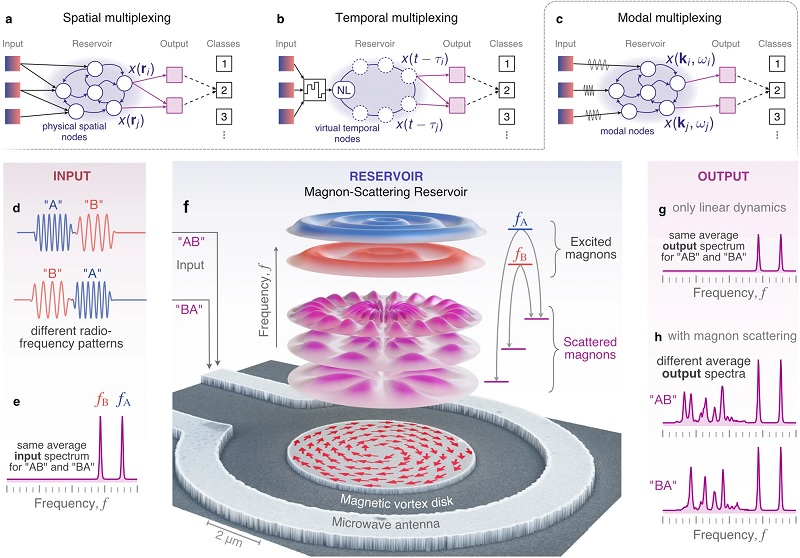Researchers from Technische Universität Dresden in Germany recently published breakthrough research showcasing a new material design for neuromorphic computing, a technology that could have revolutionary implications for both blockchain and AI.
Using a technique called “reservoir computing,” the team developed a method for pattern recognition that uses a vortex of magnons to perform algorithmic functions near instantaneously.
Not only did they develop and test the new reservoir material, they also demonstrated the potential for neuromorphic computing to work on a standard CMOS chip, something that could upend both blockchain and AI.
Classical computers, such as the ones that power our smartphones, laptops, and the majority of the world’s supercomputers, use binary transistors that can either be on or off (expressed as either a “one” or “zero”).
Neuromorphic computers use programmable physical artificial neurons to imitate organic brain activity. Instead of processing binaries, these systems send signals across varying patterns of neurons with the added factor of time.
The reason this is important for the fields of blockchain and AI, specifically, is because neuromorphic computers are fundamentally suited for pattern recognition and machine learning algorithms.
Binary systems use Boolean algebra to compute. For this reason, classical computers remain unchallenged when it comes to crunching numbers. However, when it comes to pattern recognition, especially when the data is noisy or missing information, these systems struggle.
This is why it takes a significant amount of time for classical systems to solve complex cryptography puzzles and why they’re entirely unsuited for situations where incomplete data prevents a math-based solution.
In the finance, artificial intelligence, and transportation sectors, for example, there’s a never-ending influx of real-time data. Classical computers struggle with occluded problems — the challenge of driverless cars, for example, has so far proven difficult to reduce to a series of “true/false” compute problems.
However, neuromorphic computers are purpose-built for dealing with problems that involve a lack of information. In the…
Click Here to Read the Full Original Article at Cointelegraph.com News…
























